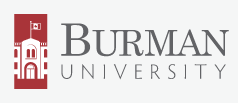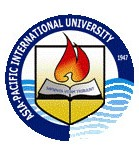
Mansfield is a suburb in the City of Brisbane, Queensland, Australia. In the 2016 census, Mansfield had a population of 8,695 people.

Burman University is an independent publicly funded university located in Lacombe, Alberta, Canada. It is sponsored by the Seventh-day Adventist Church in Canada. It is a part of the Seventh-day Adventist education system, the world's second largest Christian school system. By date of founding, it is the oldest university in Alberta. The school's official mission statement is to educate learners to think with discernment, to believe with insight and commitment and to act with confidence, compassion, and competence. The university places emphasis on service in local and global communities.

Asia-Pacific International University is a private Christian university located in Saraburi, Thailand. Its main campus is in the rural town of Muak Lek, Saraburi Province and the nursing school is located on the grounds of Bangkok Adventist Hospital in downtown Bangkok. It is the only tertiary education institution serving the Southeast Asia Union Mission of Seventh-day Adventists. Asia-Pacific International University was formerly called Mission College until mid-2009 when it was granted university status. It is a part of the Seventh-day Adventist education system, the world's second largest Christian school system.

Brisbane Adventist College is an independent Seventh-day Adventist co-educational early learning, primary and secondary day school located in the Brisbane suburbs of Mansfield and Wishart. Part of the Seventh-day Adventist education system, the world's second largest Christian school system. Enrolment is open to families of all faiths.

Adventist University of France also called in French: Campus Adventiste du Salève, formerly named Salève Adventist University, belongs to the Seventh-day Adventist Church and is affiliated with Partnership of Adventist Colleges in Europe, (PACE). The university is located about five miles from Geneva across the Swiss-French border. The campus itself is part way up Le Salève, the summit of which is at an elevation of over 1,300 metres. This mountain with its restaurants and breath-taking view of the Rhône valley or Mont Blanc attracts many from nearby Geneva. From the campus, the city of Geneva and the Lake Geneva make a picturesque view. On the same campus are located schools from kindergarten to senior high school levels.
Longburn Adventist College is an integrated co-educational Christian school in New Zealand for years 7 to 13. It is located just west of Palmerston North in the Manawatū District in the small dairy town of Longburn. It is a part of the Seventh-day Adventist education system, the world's second largest Christian school system.
Lake View Academy (LVA) is a complete secondary boarding school operated by the Seventh-day Adventist Church. It is situated in the midst of the rural area Don Carlos in Bukidnon, Philippines. It had an enrolment of 250 students during the year between 2007–2008. It is part of the Seventh-day Adventist Church's worldwide educational system.
MonsignorMichel-Gaspard Coppenrath was the Tahitian Archbishop of the Roman Catholic Archdiocese of Papeete in French Polynesia for 26 years from 1973 until 1999. Coppenrath served as the Archbishop Emeritus of the Roman Catholic Archdiocese of Papeete from 1999 until his death in 2008. Coppenrath was the first Tahitian-born Catholic bishop of French Polynesia.

This page list topics related to French Polynesia.

L’Ensemble Scolaire Maurice-Tièche or Maurice Tièche Comprehensive School is a K-13 co-educational, Christian private school owned by the Seventh-day Adventist Church in the region Collonges-sous-Salève of France. It teaches pupils of primary, junior high and senior high school age. The school also has a nursery school offering care to 2 year-olds. It is a part of the Seventh-day Adventist education system, the world's second largest Christian school system.

Gilson College is a Christian school, located in the Melbourne suburbs of Mernda and Taylors Hill, Victoria, Australia. It is a private co-educational early learning, primary and secondary day school. The College caters to students from early learning through Year 12. The original campus, located in Taylors Hill, was established in 1988. The second campus in Mernda was acquired in December 2012 and classes began in January 2013. The College is part of the Seventh-day Adventist education system, the world's second largest Christian school system.

Hong Kong Sam Yuk Secondary School was a co-educational Christian secondary school, located in Happy Valley, Hong Kong. The school was owned and operated by the Seventh-day Adventist Church.

Nunawading Christian College is an independent Seventh-day Adventist co-educational early learning, primary and secondary day school, located in the Melbourne suburb of Nunawading, Victoria, Australia.

The University of French Polynesia is a French university located in Puna'auia, French Polynesia.

South Philippine Adventist College is a private, co-educational college that started as an elementary school in 1950, transitioned into a high school in 1952, and finally became a college in 1993. It is a part of the Seventh-day Adventist education system, the world's second largest Christian school system.

The Church of Jesus Christ of Latter-day Saints had its first presence in French Polynesia in 1843 when the first missionaries arrived in the country. It was also the location of the first foreign-language mission of the church which was created that same year. It existed until 1852 when it was closed due to restrictions by the French government, and the missionaries left the territory. In 1892, the mission resumed with the return of the missionaries after general religious tolerance was established.
May Pen High School is a privately – run Seventh-Day Adventist School in Jamaica with an estimated population of 400 students. The school is located at 18A Bryants Crescent, May Pen, Clarendon and has been there for over 30 years. It is a part of the Seventh-day Adventist education system, the world's second largest Christian school system.

Teuira Henry was a British Tahitian scholar, ethnologist, folklorist, linguist, historian and educator. She worked to reconstruct a lost manuscript on the history of Tahiti written by her grandfather, English missionary John Muggridge Orsmond, by using his original notes. Most of her writings were published posthumously by the Bernice Pauahi Bishop Museum as the book Ancient Tahiti.
The Tahitian Academy is a cultural institution in French Polynesia with the purpose of preserving and promoting the Tahitian language. The Academy standardizes vocabulary, grammar, and spelling; promotes the publication and translation of works in Tahitian; and studies the origins of the language and its relationship with other pacific languages. Founded in 1972, it consists of up to twenty members elected by their peers.
Charles Henri Vernier was a French Polynesian religious leader, academic, and politician. He led the Maohi Protestant Church for 40 years from 1911 to 1951, and was the first elected representative of French Polynesia to the French legislature.













